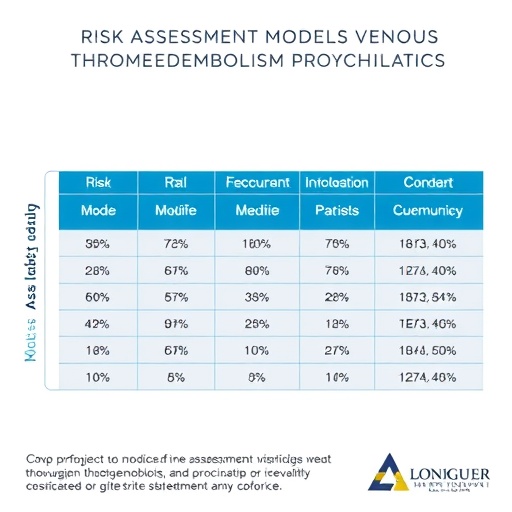
In the relentless pursuit of sustainable and highly efficient energy sources, tandem solar cells have emerged as a beacon of innovation within the photovoltaic landscape. Among these, perovskite–organic tandem solar cells stand out, uniquely positioned to harness the broad spectral range of sunlight due to their tunable bandgaps. Despite their vast theoretical potential, however, the certified efficiencies of these tandem configurations have traditionally lagged behind those of their single-junction perovskite counterparts. This discrepancy roots predominantly in the near-infrared (NIR) region, where narrow-bandgap organic subcells fall short in photocurrent generation. A recent breakthrough published in Nature by Jia, Guo, Yin, and colleagues has now charted a transformative path to overcoming this bottleneck and achieving record performance metrics.
A cornerstone of this advancement lies in the innovative design and synthesis of an asymmetric non-fullerene acceptor (NFA) molecule, P2EH-1V. This molecule fundamentally redefines the optical bandgap landscape by integrating a unilateral conjugated π-bridge, which pushes the bandgap down to a highly desirable 1.27 eV. This low bandgap is crucial, as it enables the organic subcell to extensively capture near-infrared photons — a hitherto elusive spectral range for organic photovoltaics. Yet, beyond just the bandgap tuning, P2EH-1V maintains a delicate balance, optimizing exciton dissociation and preserving ideal nanomorphological characteristics within the photovoltaic blend, which are pivotal for efficient charge transport.
Transient absorption spectroscopy experiments provide compelling evidence underpinning the efficacy of P2EH-1V in the device architecture. The data reveal efficient hole transfer dynamics from the acceptor P2EH-1V to the donor polymer PM6, facilitating swift and effective separation of photogenerated excitons. This rapid interfacial charge transfer mitigates recombination pathways and enhances overall photocurrent generation, thus directly impacting device performance.
.adsslot_ehBJLs7yfN{width:728px !important;height:90px !important;}
@media(max-width:1199px){ .adsslot_ehBJLs7yfN{width:468px !important;height:60px !important;}
}
@media(max-width:767px){ .adsslot_ehBJLs7yfN{width:320px !important;height:50px !important;}
}
ADVERTISEMENT
The practical implications of this molecular innovation are strikingly realized in device metrics. Organic photovoltaic devices incorporating P2EH-1V demonstrate a remarkable reduction in non-radiative voltage losses, quantified at a mere 0.20 eV. Such minimization of voltage loss is critical for pushing photovoltaic efficiency closer toward theoretical limits, as it indicates fewer energy penalties stemming from charge recombination and suboptimal energetic alignments. Crucially, this reduction in voltage loss occurs without compromising the efficiency of charge generation, signifying a balanced and robust photoactive system.
The tangible outcomes of this molecular and device engineering approach are clearly reflected in the organic bottom cell’s performance. Achieving a power conversion efficiency (PCE) of 17.9%, coupled with a notably high short-circuit current density (J_sc) of 28.60 mA cm⁻², these organic subcells exhibit both enhanced NIR absorption and superior carrier extraction capabilities. This represents a leap toward surmounting the primary limitation that has long hindered the efficiency parity of organic bottom cells in tandem stacks.
Beyond individual subcell enhancements, the interface between the perovskite top cell and the organic bottom cell has been meticulously optimized to suppress recombination losses that typically erode tandem efficiency. By minimizing these interfacial losses, the perovskite top cell delivers an impressive open-circuit voltage (V_oc) of 1.37 V alongside an exceptional fill factor (FF) of 85.5%. Together, these metrics suggest that the intercellular electronic coupling and charge recombination dynamics are operating near their ideal conditions, a critical requirement for high-performance tandem operation.
The culmination of these intricate molecular and device improvements materializes in the overall performance of the perovskite–organic tandem solar cells. The team reports a record-breaking efficiency of 26.7%, validated with a certified value of 26.4% measured over an aperture area exceeding 1 cm². This performance not only signifies a new pinnacle for perovskite–organic tandems but also narrows the efficiency gap with state-of-the-art perovskite single-junction cells, thereby validating the tandem approach as a viable pathway to surpass conventional photovoltaic limits.
Importantly, the holistic approach embraced by Jia et al. illustrates the necessity of co-optimization across multiple dimensions—including molecular design, interfacial engineering, and device fabrication—to unlock efficiencies beyond incremental gains. Their work exemplifies the current frontier in photovoltaic research, where subtle molecular asymmetry combined with advanced spectroscopic validation informs tangible enhancements in solar energy capture and conversion.
This milestone in near-infrared harvesting also heralds significant implications for future photovoltaic deployment strategies. Harnessing a broader portion of the solar spectrum offers pathways to reduce the number of required tandem junctions while maintaining or enhancing efficiency, consequently simplifying manufacturing processes and reducing costs. Furthermore, the organic nature and solution processability of the bottom cell materials promise compatibility with scalable, low-temperature fabrication techniques, a key consideration for industrial adoption.
The convergence of reduced non-radiative losses, efficient exciton dissociation, and interface recombination suppression culminates in a device architecture that is not only efficient but also intrinsically stable under operational conditions. While stability remains a perennial challenge in emerging photovoltaic technologies, the synergy between material innovation and device engineering showcased here hints at tangible avenues toward durable, commercial-ready tandem modules.
As the photovoltaic community digests this landmark achievement, parallel efforts may accelerate in exploring alternative asymmetric NFAs, refinement of perovskite compositions, and tailored interfacial layers to further push the envelope. These research directions not only promise incremental performance improvements but may also unlock transformative cost- and material-efficiency advantages.
In summary, the work reported by Jia and colleagues marks a critical leap forward in the efficient utilization of near-infrared light within perovskite–organic tandem solar cells. Their multifaceted approach, combining chemical design, nanomorphological control, and interfacial engineering, culminates in a record efficiency that challenges the status quo of photovoltaic research. This study underscores the ongoing maturation of tandem solar cell technology as a leading contender for the next generation of high-performance, cost-effective renewable energy solutions, fostering optimism for a solar-powered future.
Subject of Research: Perovskite–organic tandem solar cells with enhanced near-infrared harvesting capabilities.
Article Title: Efficient near-infrared harvesting in perovskite–organic tandem solar cells.
Article References:
Jia, Z., Guo, X., Yin, X. et al. Efficient near-infrared harvesting in perovskite–organic tandem solar cells. Nature (2025). https://doi.org/10.1038/s41586-025-09181-x
Image Credits: AI Generated
Tags: advancements in organic solar technologyasymmetric non-fullerene acceptorsexciton dissociation optimizationlow bandgap materialsnear-infrared harvestingperovskite-organic photovoltaicsphotocurrent generation improvementsrecord performance metrics in solar cellssolar energy efficiencyspectral range utilization in photovoltaicssustainable energy innovationtandem solar cells





